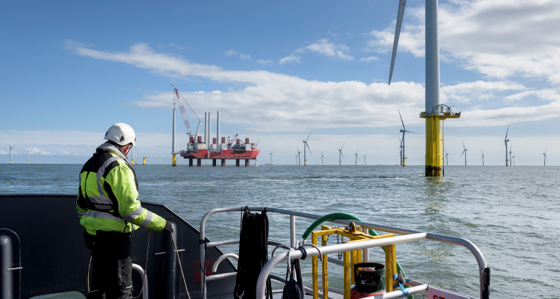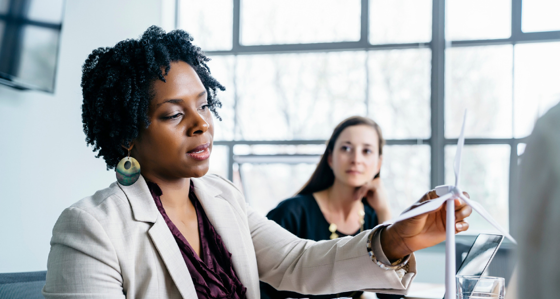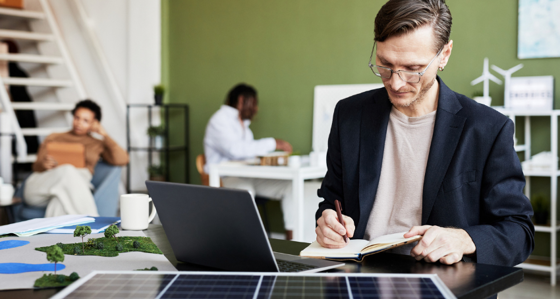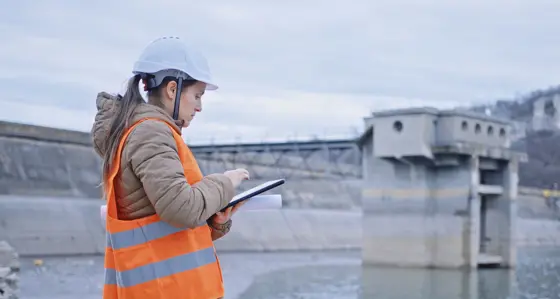
Floating offshore wind - The quest for scale
8 min read 8 February 2024
Harvesting wind in previously inaccessible seabed areas has many advantages, but there are some obstacles that need to be overcome before we can deploy floating offshore wind at scale. One of the main challenges is the lack of standardisation in emerging technologies. Additionally, significant investment in port infrastructure is required to make deployment feasible.
Fixed-bottom turbines currently dominate the global offshore wind market, but their limitations in deep water make floating alternatives attractive to scale up offshore wind deployment.
Floating wind, forecasted to reach more than 25GW by the mid 2030s, offers numerous advantages, including access to higher wind speeds further out at sea, expanded seabed areas, and reduced environmental impact during installation and operation.
Key players, such as the UK, the US and China, and numerous European countries, are making significant allocations for floating offshore wind projects. But despite the potential, the mass roll-out of floating wind turbines faces technical challenges. These include a lack of standardisation in the emerging technologies around foundation design, as well as supply chain constraints, leading to a relatively high levelised cost of energy.
Overcoming these barriers requires substantial investment, port infrastructure development and policy support. As countries race to achieve their energy transtion goals, floating offshore wind is likely to be a mix of innocation and co-operation.
Download our full report below and get in touch to find out more.
Related Insights

Trump trade tariffs: Impact on the UK EV uptake
The global automative industry is at a critical juncture, shaped by intersecting forces of electrification, geopolitical trade tensions, and national decarbonisation policy.
Read more
Driving economic growth by securing a cleaner and resilient future for the North Sea
Our report, published in conjunction with Offshore Energies UK (OEUK), outlines how the North Sea can continue to play a pivotal role in the energy system as the world shifts to net zero, while positioning the UK as a resilient, innovative and competitive player in the global energy landscape.
Read more
From early adopters to early majority: Driving the next phase of EV growth
As EVs are moving beyond the early adopter phase, what are the principles needed for mass market adoption and progressing towards net zero targets?
Read more
Crossing the industry divide to drive decarbonisation across Asia-Pacific
Resources organisations are identifying opportunities in the unfamiliar overlap between energy, mining and metals.
Read moreRelated Client Stories

Maximising impact from AI investment for a global energy leader
Discover how a series of experiential learning events resulted in employee confidence in AI skills hitting 85%.
Read more
Maintaining the stability of the New South Wales power system
How do you ensure the future stability of the NSW power system?
Read more
Using AI to manage applications for connecting low-carbon devices
With growing calls for processes to be standardised, Baringa and Energy Networks Association (ENA) came together to develop and launch the first central industry platform to transform the way registrations for low-carbon devices are managed.
Read more
Collaborating globally to future proof Australia’s water resources
How do you effectively manage the ever-evolving supply and demand challenges of water resources?
Read moreIs digital and AI delivering what your business needs?
Digital and AI can solve your toughest challenges and elevate your business performance. But success isn’t always straightforward. Where can you unlock opportunity? And what does it take to set the foundation for lasting success?